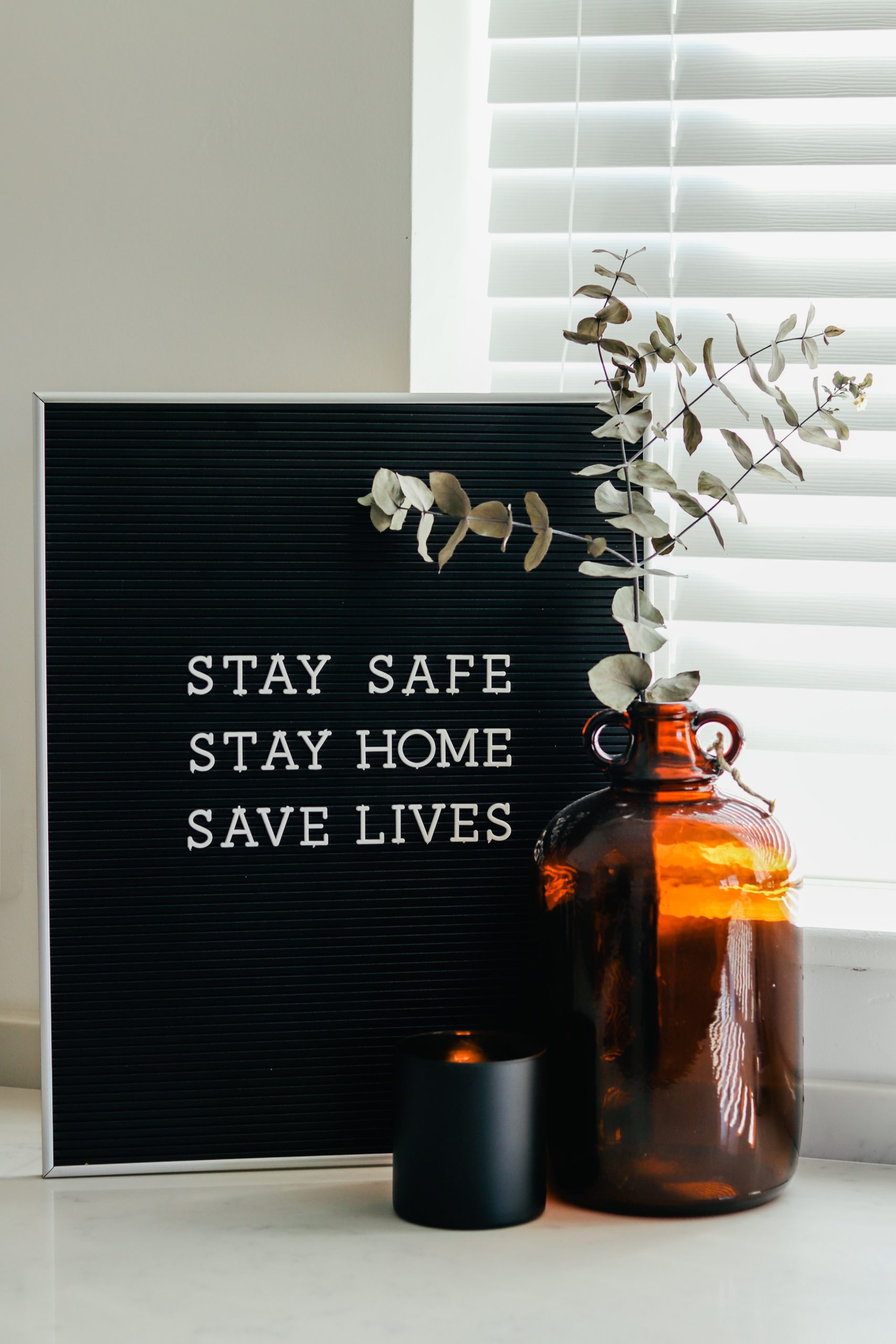Is the cost-benefit balance shifting?

Photo by Sandie Clarke on Unsplash
**ALERT: This post is about my opinions more than about science.**
Results were just published from a poll (link to full report at site) of households in America’s four largest cities (NYC, LA, Chicago, Houston) to assess the financial, health, and other impacts of the pandemic response. I emphasize the response, not the pandemic, because the impacts surveyed are not necessarily consequences of COVID-19 infections but more a result of our collective efforts to contain or avoid the virus.
The poll was conducted by NPR, Harvard, and the Robert Wood Johnson Foundation during the month of July, so I think we can safely assume that the numbers have worsened since then because the federal $600 household support payments have ended.
Some snapshots of the data:
New York City: A third of households reported using most or all of their savings, while majorities of Black and Latinx households report serious financial trouble.
Houston: 60% of households say they’ve had trouble caring for children during the pandemic. And 45% report internet connection issues for school or work, or that they have no high-speed internet at home.
Chicago: Nearly a quarter of households report someone who hasn’t been able to get medical care due to the pandemic, and more than half of these report negative health consequences as a result.
Los Angeles: About 60% of households report some job loss, including reduced hours or furloughs. Nearly two-thirds of households with incomes less than $100,000 report serious financial trouble.” {summary courtesy of STAT Morning Rounds newsletter Sept. 9, 2020}
“At least half of households in the four largest U.S. cities—New York City (53%), Los Angeles (56%), Chicago (50%), and Houston (63%)—report facing serious financial problems during the coronavirus outbreak. Serious problems are reported across a wide range of areas during this time, including depleted household savings, serious problems paying credit card bills and other debt, and affording medical care.
Many of these problems are concentrated among Black and Latino households; households with annual incomes below $100,000;…
Since the start of the coronavirus outbreak, 19 percent of New York households, 20 percent of Los Angeles households, 23 percent of Chicago households, and 27 percent of Houston households report anyone in their household has been unable to get medical care for a serious problem when they needed it.” {from RWJ press release}
These data are sobering, to say the least. They give a valuable quantitative basis for a fresh conversation about costs vs benefits of our efforts to mitigate the spread of SARS-CoV-2.
Since the start of the pandemic, I have tried to emphasize that the best scientific information of the day should inform our policy decisions in the battle against COVID. Denial, dismissal, ignorance, rejection of expertise, and partisanship should have no place in the debate. At the same time, it’s absurd to say that “science” can make the necessary decisions. Science doesn’t dictate policy. It informs the choices, which will be decided based on values.
Every choice we make is a trade-off between costs and benefits.
We shut down the economy in March in order to save up to 2 million American lives—a gigantic cost weighed against a gigantic benefit that most Americans (though certainly not all) agreed was the right choice at the time.
But the pandemic in all its myriad manifestations is not static. Things change. The cost-benefit balance struck in March might not apply anymore. Unfortunately, I feel like many Americans have staked out a position with their tribe, and dug in for the long haul: trench warfare of the mind. For example, red tribe has committed itself to opposing face masks even though the admittedly modest benefit of wearing them is incredibly cheap and easy compared to other options. Blue tribe has committed itself to a degree of social distancing and enforced business closures that no longer seems tethered to the original goal of protecting the health care system from overload, but rather to bring deaths as close to zero as possible regardless of the cost.
We must be open to re-evaluating the cost/benefit balance of our decisions. So here’s what I want to bring up for debate. In short, costs have risen and benefits have fallen since our initial actions in March.
On the benefit side, the likely maximum death toll from COVID has fallen. Part of the reason is the successful measures we have already taken. Now, we know better how to identify the most vulnerable people, how to care for those who end up in hospital, and how to minimize transmission of the virus with the least disruption of human activity (Plexiglas in the checkout line, face masks, etc.). Many people have learned to successfully work from home. There’s new evidence that not all humans are susceptible to infection (see upcoming blog post) so we are not 100% immunologically naïve as was originally expected. And we now know that a large percentage of coronavirus infections are asymptomatic or very mild.
On the cost side, costs are cumulative. Financial costs, social costs, and medical costs (such as those itemized in the poll) are all increasing. In many cases, the costs are accumulating like a balloon payment mortgage: gradual until reaching a catastrophic end point. The longer we experience pandemic disruption, the more businesses not just acquire debt but will collapse entirely; the more marriages will not only be strained but will fail; the more deaths of despair; the more jobs will disappear forever; and the more children will be permanently harmed or disadvantaged.
At what point do we say the cost is too high? At what point do we decide to reduce costs knowing that means some people will die of COVID who might not otherwise? Some readers would say we’ve made this deal already. 180,000 Americans are dead of COVID. Maybe if we’d been more severe with lockdowns we could’ve reduced that number.
How many is too many? How much is too much? Every life is precious but in practice we make quantitative decisions about lives all the time. A good example is highway speed limits. We know that the lower the speed limit, the more accidental deaths we prevent. Yet we abandoned the 55 mph national limit in favor of higher speeds, because of the “costs.” Thousands of people are dead as a direct result. That is our societal choice, and I’m sure not everyone agrees with it.
We might choose to spend a trillion dollars to save a million lives from COVID. But would we spend a trillion dollars to save a thousand lives? No. COVID is likely to be one of the top three killers in the US in 2020, but not #1. Heart disease kills about 650,000 Americans per year (2017 data) and cancer kills about 600,000. COVID is getting close to 200,000 so far. Are we privileging COVID deaths over other causes? What if the staggering effort and cost we’ve put into COVID prevention went to cancer screening and research on cancer therapies, or free fitness programs for everyone, or intensive dietary training with cooking lessons, or…or…or…
Some might say that rather than reduce the costs of fighting COVID, we should give financial support to those most affected. I agree in principle, but the scope and duration of the economic burden is simply too great to lay on the shoulders of our young people who will be on the hook for this cost in the future. Is this how they, or we, should choose to invest this scale of resources? Maybe this scale of effort and expense would be better directed to more radical, permanent changes. Universal health care and a universal basic income would save more lives in the long run than extreme COVID prevention.
Cash payments also wouldn’t relieve some of the biggest social costs of pandemic mitigation: depression and loneliness, and all the problems with online education.
Time to reassess?
So what should we do? I don’t know, exactly. I think we need to reduce both social and economic costs of pandemic resistance but not give up completely. We need to be smart about it, and we need to take some risks.
I still believe that the best standard for whether we are doing enough is that our health care system has plenty of capacity for the existing COVID cases. That seems to be a level of virus transmission that’s stably a little bit higher than what we have right now (on average nationwide). So we can afford to take some chances.
My opinion is we should prioritize in-person school reopening and let thousands of experiments test what happens, and what works. School matters immensely for both social and economic costs across the board. Yes, new cases of SARS-CoV-2 infection will result. Communities should watch for hospitalizations, while counting cases in specific age groups and giving less weight to new infections in healthy young people. New cases in 14-year-olds, for example, might be worth 1/5 of a case in a 50-year-old, or 1/20 of a case in a nursing home resident.
Second, humans have a profound need to gather. We should find ways to let them. Because we now know that virus transmission is primarily through the air, there are better and worse ways to do this. What if we allowed gatherings of any size as long as they are outdoors? Requiring masks could further mitigate the small risk of outdoor transmission. Yes, new cases would come from such events but maybe in numbers that are worth the mental health benefits of weddings and funerals and parties and political protests and worship services and concerts. Such events by their nature are voluntary, so individuals at higher risk could choose to stay away.
I know some of you will vehemently disagree. I admit that one reason I’m backing this approach is I suspect the health consequences will be less severe than people think. And I’ll remind you of this: both progress and failure in mitigating the pandemic are reversible. Countries that made great strides earlier can see their progress erased as the virus comes back. Places that had out-of-control situations can get them under control. If schools and outdoor gatherings threaten the health care system—not just increasing the total number of cases—then we shut them down.
Amy Rogers, MD, PhD, is a Harvard-educated scientist, novelist, journalist, and educator. Learn more about Amy’s science thriller novels, or download a free ebook on the scientific backstory of SARS-CoV-2 and emerging infections, at AmyRogers.com.
Sign up for my email list
Share this:



0 Comments